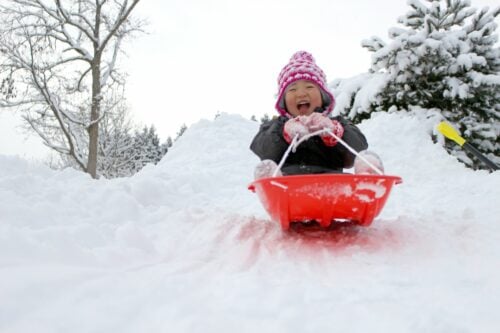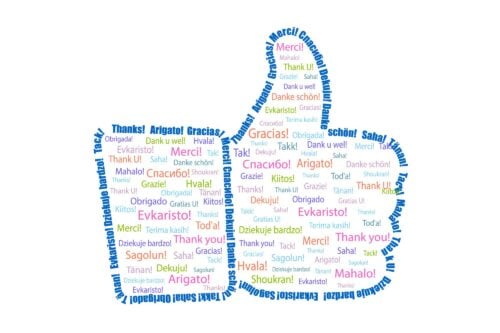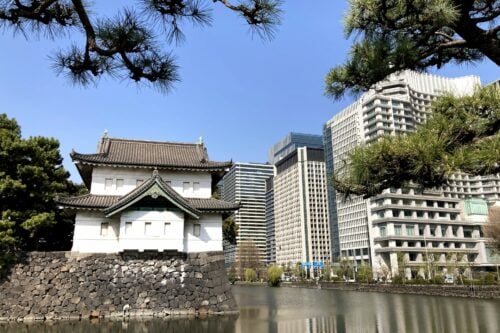Share on your favorite
Or copy the link
Below are navigation links that will take you to the main text and navigation menus.
26,551 first names, 70,620 last names, 333,585 kanji variations.
one of the best Japanese name search tools for your baby!

Japanese names often fascinate people from around the world. They can look beautiful when written in kanji (Chinese characters), yet pose a real challenge when it comes to pronunciation. The complex interplay of kanji meanings, reading variations, and cultural significance makes Japanese names both intricate and alluring. If you’ve ever wondered why two people with the same name might use completely different kanji—or why it’s so hard to guess the correct reading—this guide will walk you through the basics (and beyond) of how Japanese names work.
Contents
In many Western cultures, personal names follow fairly straightforward conventions. You’ll typically have a first name, a middle name, and a family name, in that order. While naming trends change, the rules are relatively consistent. Japanese names, on the other hand, come with:
All these factors combine to create a naming culture that is both poetic and sometimes perplexing—an important window into Japan’s history and modern identity.
In a formal Japanese setting, names are typically expressed surname first, followed by the given name. For example, a person named Hanako Yamada![]() would be “Yamada Hanako
would be “Yamada Hanako![]() ” in Japanese. However, in some international contexts, many Japanese people simplify by reversing the order to mimic Western conventions—i.e., “Hanako Yamada.”
” in Japanese. However, in some international contexts, many Japanese people simplify by reversing the order to mimic Western conventions—i.e., “Hanako Yamada.”
In recent years, the Japanese government has emphasized using the traditional order (surname first, then given name) for official documents and international settings, but in casual or business communications outside Japan, you’ll still encounter both orders.
There are thousands of Japanese surnames—some estimates suggest over 100,000 in existence. Common names like Sato (佐藤)![]() , Suzuki (鈴木)
, Suzuki (鈴木)![]() , or Takahashi (高橋)
, or Takahashi (高橋)![]() are likely to appear in any large group of people. Yet some surnames are quite rare, reflecting ancient geographic or historical roots.
are likely to appear in any large group of people. Yet some surnames are quite rare, reflecting ancient geographic or historical roots.
Many surnames trace their origin to:
If Japanese surnames represent centuries of tradition, given names represent a space of creativity and modern trends. Unlike surnames, which remain relatively stable over time, parents often choose given names to reflect current tastes or to convey specific wishes for their child.
A major draw of Japanese given names is the range of kanji characters available. Each kanji carries both a sound (or multiple sounds) and a meaning. Parents often spend considerable time picking the right kanji to reflect their hopes, such as courage, beauty, intelligence, or a connection to nature.
Here is the examples of naming practices.
While kanji meanings can be profoundly symbolic, reading them correctly is not always straightforward. One kanji can have several possible pronunciations. Sometimes parents opt for unusual or poetic readings, a practice known as ateji (当て字) when the chosen characters are used mostly for aesthetic or thematic reasons rather than standard readings.
Historically, surnames were once a privilege mostly reserved for samurai families, while commoners often did not have formal family names. After the Meiji Restoration in the late 19th century, the government mandated that all citizens adopt surnames, leading to the wide variety of surnames still in use today.Over the 20th century, naming trends ebbed and flowed with broader cultural changes. In the Showa era (1926–1989), names often reflected traditional values and aesthetics. By the Heisei era (1989–2019), international influences became more pronounced, with many families adopting kanji combinations that sounded modern or had a stylish flair. Now, in the Reiwa era (2019–present), names that blend tradition and modernity—or are uniquely fashionable—continue to evolve.
Beginning in the Meiji period, Japan embraced selective Westernization. This shift also appeared in naming. Some parents used katakana for Western-sounding names, or combined Japanese kanji with English-inspired readings, especially from the late 20th century onward.
Globalization has also sparked more international marriages in Japan, leading to hybrid naming conventions where a child may hold a Western given name plus a Japanese middle name, or vice versa.
If you’re new to the language, the complexity of kanji and their possible readings can be overwhelming. Even native Japanese speakers can struggle when encountering an unfamiliar name. Relying on romanization (the conversion of Japanese script into the Roman alphabet) doesn’t always help either, because it’s not always evident where to put the accent or stress.Tip: If you’re not sure how to say someone’s name, politely ask them, “How should I pronounce your name?” or “Could you please say your name for me once?” This is perfectly acceptable and far preferable to guessing incorrectly.
In Japanese, people rarely use first names alone outside of close relationships. Instead, they attach respectful suffixes like -san (さん) for most polite interactions, -kun (くん) for younger males or subordinates, and -chan (ちゃん) for close friends, children, or affectionate contexts.
While nicknames in English often shorten the original name (e.g., “Christopher” becomes “Chris”), Japanese nicknames can be based on:
Nicknames reflect the closeness between people and can sometimes involve inside jokes. For instance, if someone’s name is Hiroki, friends might choose to call him “Hiro” or “Hiro-kun” in an affectionate twist.
Suffixes like -chan or -kun inherently encode social context—age, familiarity, or status. The usage can be quite different from how Westerners think of nicknames, since these suffixes indicate your relationship to the person and not just a casual name form.
With increasing cultural exchange and the popularity of English media, some Japanese parents look for names that sound distinctively “cool” in both Japanese and English. As a result, you might see children named Ria (リア)![]() , Tia (ティア)
, Tia (ティア)![]() , or Leo (レオ)
, or Leo (レオ)![]() , which translate comfortably into Western contexts. Some go further and pick kanji that keep a certain Japanese flavor yet have an English ring when read aloud.
, which translate comfortably into Western contexts. Some go further and pick kanji that keep a certain Japanese flavor yet have an English ring when read aloud.
The digital age hasn’t spared naming trends either. On one hand, computing systems require consistent character encoding. On the other, young parents share name ideas on social media and might feel encouraged to adopt fashionable or unusual kanji. Such names can become “viral,” spreading quickly and adding new creativity to an already diverse naming culture.
If you’re uncertain which form of address is appropriate, start more formally and observe how others in the same setting communicate. If the person explicitly asks you to use their first name, it’s usually fine. However, some Japanese people might continue to use more formal address even in casual contexts because it feels more natural to them.
Comparing these historical figures to modern celebrities—like, say, athlete Shohei Ohtani (大谷 翔平)![]() —shows how some elements in names (like “翔,” to fly or soar) remain popular across centuries, but the style and usage adapt to each era.
—shows how some elements in names (like “翔,” to fly or soar) remain popular across centuries, but the style and usage adapt to each era.
Whether you’re studying Japanese language and culture, planning a trip to Japan, or just curious about this intriguing naming system, diving into Japanese names offers a richer understanding of how language, identity, and tradition intersect. Feel free to share your own questions, experiences, or favorite Japanese names—there’s always something new to discover in the world of kanji, phonetics, and cultural nuance!





Sort by: Most Kanji Variations
Sorts names by how many different kanji spellings they have. In general, names with more variants tend to be more familiar and widespread in Japan (with some exceptions).
Sort by: Most Viewed
Sorts names by page views on this site. Views reflect global traffic (including Japan), so this does not represent popularity among Japanese people only. A high view count does not necessarily mean the name is famous in Japan.
What is Hiragana?
Hiragana is one of the two Japanese syllabaries. Each character represents a sound (mora), not a meaning. It is used for native words, grammatical particles, verb/adjective endings (okurigana), and to show pronunciation above kanji (furigana). It developed from cursive forms of kanji.
What is Katakana?
Katakana is one of the two Japanese syllabaries. Each character represents a sound (mora), not a meaning. It is mainly used to write foreign words and names, loanwords, onomatopoeia, and for emphasis.
What is English Transcription?
“English transcription” (romanization) is the romanized form of a Japanese name, intended to reproduce its pronunciation as closely as possible. It is also useful for searching names on this site.
Japanese-Style Nicknames
In Japan, nicknames are used to express familiarity and affection. Typical features include:
Shortened forms: Names are often shortened for closeness, e.g., “Yuki” from “Yukiko” or “Taka” from “Takashi”.
Suffixes: Terms like “-chan” (often for girls, also for young children) and “-kun” (often for boys) are used among family and close friends. Among very close adults, “-chan” may still be used. More details
Use & context: Nicknames are informal—common among friends, family, or close colleagues—and are not suitable for formal or professional settings. Their use implies a certain degree of intimacy.
Long vowels: The long vowel mark “chōonpu” (ー) extends the preceding vowel. For example, “あーちゃん” (A-chan) lengthens the “あ” sound.
Households
Sorts surnames by the estimated number of Japanese households that use them. More households generally indicates a more common or well-known surname.
About our last-name data
